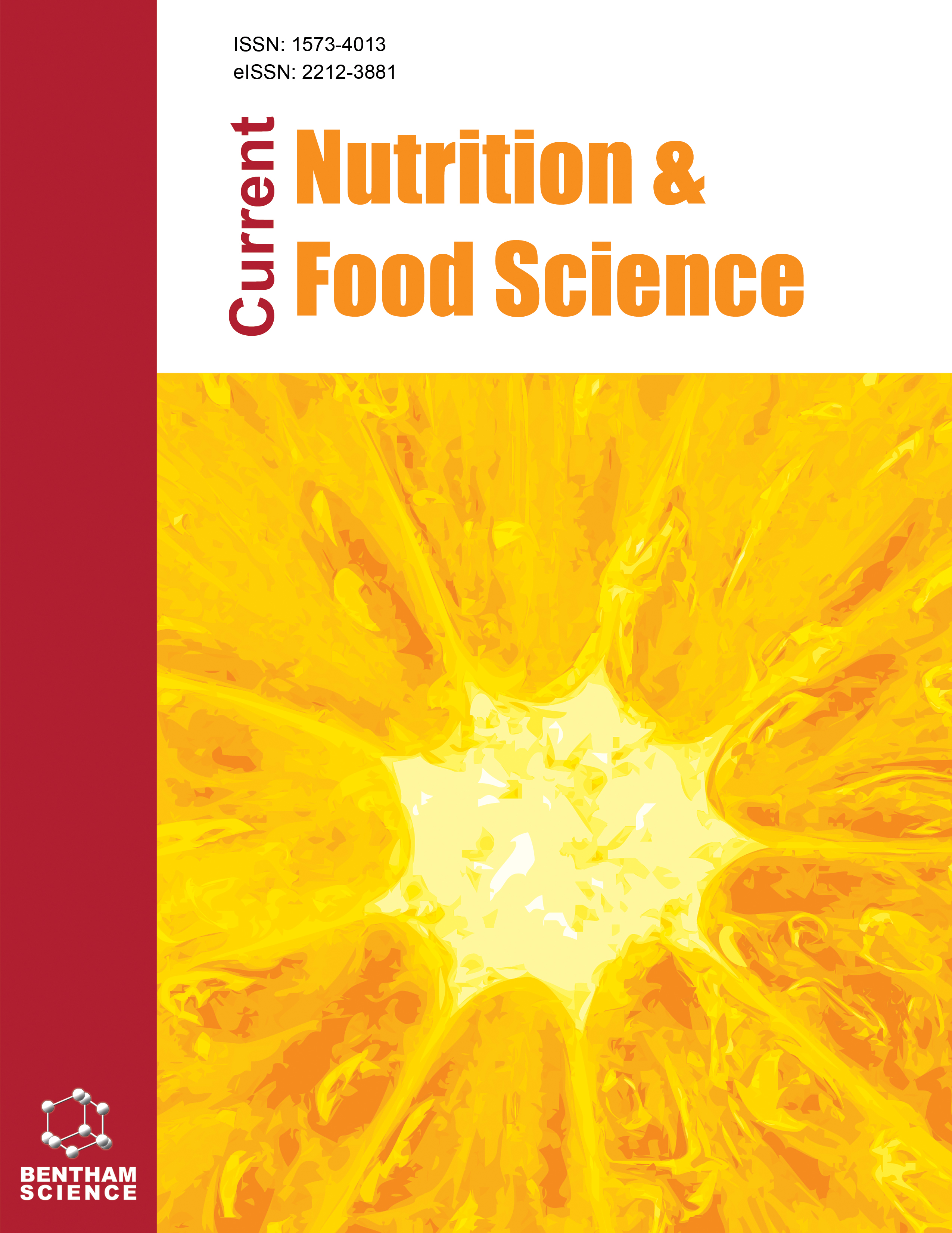- Home
- A-Z Publications
- Current Nutrition & Food Science
- Previous Issues
- Volume 2, Issue 3, 2006
Current Nutrition & Food Science - Volume 2, Issue 3, 2006
Volume 2, Issue 3, 2006
-
-
Role of Dietary Xenobiotics-Gene Interactions in Carcinogenesis: Protective Effects of Nutritional Factors
More LessIn this paper, we discuss how interactions between dietary xenobiotics and nutrients influence cancer risk by modulating overlapping biochemical pathways leading to repression of tumor suppressor genes, activation of tumor promoters, or both. Epidemiologic studies in humans suggested that diet is an important vehicle of exposure to various xenobiotics, including polycyclic aromatic hydrocarbons (PAHs), dioxins, and chlorinat Read More
-
-
-
The Role of Physical Activity in the Development and Prevention of Overweight and Obesity in Childhood
More LessAuthors: Christine Graf, Hans-Georg Predel, Walter Tokarski and Sigrid DordelThe prevalence of obesity among children and adolescents is increasing rapidly. In Germany, between 10 - 20% of children are overweight or obese. Besides, a possible genetic predisposition and excessive energy intake, decreased physical activity and a sedentary lifestyle have been implicated as risk factors. Data about children's activity and its correlation with obesity are sparse and also inconsistent, as different me Read More
-
-
-
Fructose Consumption, Lipid Metabolism and the Metabolic Syndrome
More LessAuthors: Kim-Anne Le and Luc TappyFructose consumption per capita has increased markedly over the past decades and is thought to be related with the increased incidence of obesity and metabolic disorders worldwide. Fructose metabolism is mainly hepatic, for its first step at least, and does not require insulin. It was therefore initially thought to be of potential benefit in the dietary management of patients with impaired glucose homeostasis. Long term fructose Read More
-
-
-
Monitoring and Surveillance of Obesity in the United States
More LessThis review describes data sources for assessing the prevalence of overweight and obesity in the entire U.S. population, and some examples of surveillance in specific subpopulations (i.e., schoolchildren, military, and athletes). On the basis of body mass index (ratio of weight in kg to height in m2) of 30 or higher from body measurement, which is more accurate than self-reported data, the prevalence of obesity among U.S. ad Read More
-
-
-
The Interaction of Dietary Fibres with the Colon
More LessAuthors: Iain A. Brownlee, Peter W. Dettmar, Vicki Strugala and Jeff P. PearsonThe term dietary fibre describes a wide range of highly divergent (mainly polysaccharide) compounds that escape digestion before the colon. Fibre is often regarded as a neutral dietary compound, not interacting with the gut and only offering dietary "benefit" by the consequent absence of calorific macronutrients, or by bulking out luminal content. Although the above benefits are apparent, a number of other physiological e Read More
-
-
-
Mediterranean Diet and Cardiovascular Disease
More LessAuthors: Julie Goulet, Annie Lapointe, Simone Lemieux and Benoit LamarcheIn the early 60s, data from the Seven Countries Study demonstrated that diet was a key risk factor for cardiovascular disease (CVD). Several epidemiological studies have since then provided further support to this concept by demonstrating that adherence to a Mediterranean food pattern was associated with a reduction in total and CVD mortality. The mechanisms underlying the cardioprotective effects of the Mediterranea Read More
-
-
-
Parental Feeding Style and Eating Attitudes: Influences on Children's Eating Behavior
More LessAuthors: Suzanne E. Mazzeo, Karen S. Mitchell, Clarice K. Gerke and Cynthia M. BulikWithin the past three decades, the percentage of children who are overweight or at risk for overweight has more than doubled. Pediatric overweight negatively affects physical and psychological well-being, and overweight children are at high risk of becoming obese adults. Several parental variables are associated with childhood eating and weight problems, including genetics, feeding style, and role modeling of eati Read More
-
-
-
Chitosan as a Dietary Supplement for Weight Loss: A Review
More LessAuthors: Harry G. Preuss and Gilbert R. KaatsObesity is a serious health problem not only in the United States but also throughout the world. It is generally recognized that complications of the overweight state and obesity are responsible for thousands of deaths each year, because excess fat accumulation is associated with heart disease, stroke, and diabetes that significantly reduce life expectancy. Many have come to realize that most individuals, especially when elderly, r Read More
-
-
-
Book Review
More LessBy Fidel ToldraThe book contains 14 chapters, distributed into 5 parts, that range in length from approximately 10 to 12 pages. The introductory chapter is addressing a general perspective of the book, its organization and main goals, giving also some misguided perspectives on marketing nutrition of four hypothetical people: a dietitian, a government administrator, a marketing manager, and a researcher. Part 1 deals with the secrets Read More
-
Volumes & issues
-
Volume 21 (2025)
-
Volume 20 (2024)
-
Volume 19 (2023)
-
Volume 18 (2022)
-
Volume 17 (2021)
-
Volume 16 (2020)
-
Volume 15 (2019)
-
Volume 14 (2018)
-
Volume 13 (2017)
-
Volume 12 (2016)
-
Volume 11 (2015)
-
Volume 10 (2014)
-
Volume 9 (2013)
-
Volume 8 (2012)
-
Volume 7 (2011)
-
Volume 6 (2010)
-
Volume 5 (2009)
-
Volume 4 (2008)
-
Volume 3 (2007)
-
Volume 2 (2006)
-
Volume 1 (2005)
Most Read This Month
Article
content/journals/cnf
Journal
10
5
false
en


